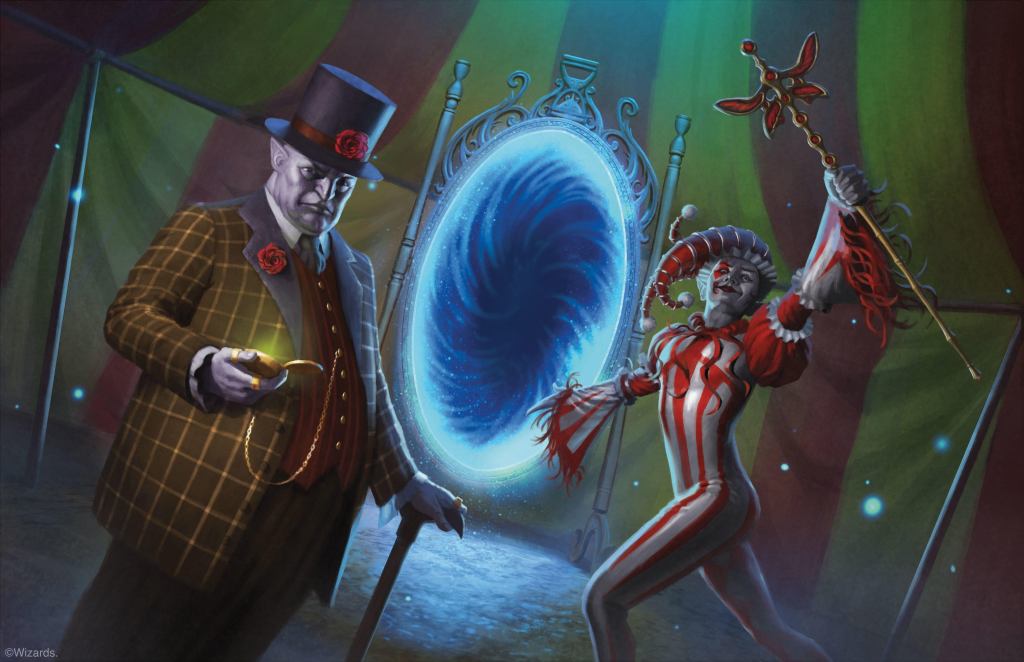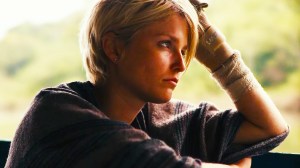Dungeons & Dragons‘ latest adventure is presented very differently than past campaigns which comes with both a freedom for storytelling and a tension with the rules and limits of the game’s current Fifth Edition. The Wild Beyond the Witchlight is a new campaign adventure set in the Feywild, an area mostly neglected in Dungeons & Dragons lore and literature. The Feywild is the whimsical home of fairies and fey, a place generally governed by certain rules but where a person’s mood and emotions can have an external impact on their surroundings. A moment of happiness might be accompanied by the burst of birdsong, while a moment of anger might cause literal stormclouds to form above you.
Videos by ComicBook.com
While Wizards of the Coast’s last D&D adventure was set in the well-worn locale of Icewind Dale (an area well-defined by numerous novels and adventures over the years), The Wild Beyond the Witchlight takes place mostly in Prismeer, a Feywild Domain of Delight. Prismeer was once ruled by the archfey Zybilna. In the recent past, a group of hags known as the Hourglass Coven betrayed Zybilna and transformed Prismeer into their own image, splitting it into three parts while Zybilna remains trapped in time within her own castle. The campaign asks players to meander through Prismeer’s three distinct regions and “deal” with the hags before eventually exploring Zybilna’s palace to free the archfey and return home.
Prismeer is filled with fun characters such as an animated dandelion who’s in love with a bumbleebee and a kindly goblin obsessed with keys. DMs can help bring them to life with some easy reference materials found at the end of the book. If there’s one criticism I had of how Prismeer is presented, it’s that the book fails to show what the domain was like before the Hourglass Coven took over. This not only would help DMs craft a story that compels the players to fix this broken world, it would also provide the foundation for what other Feywild adventures could look like as well.

In order to enter the Feywild, players must first explore the Witchlight Carnival, a traveling big-top-style circus filled with all manner of whimsical characters. The Witchlight Carnival is easily the strongest chapter of the adventure, a modest setting bursting to the seams with mystery, misadventure, and more than a little foreboding. Much of the marketing surrounding The Wild Beyond the Witchlight focuses on the Witchlight Carnival, and for good reason – it’s one of the strongest opening set pieces for a D&D adventure that we’ve seen in official Fifth Edition adventures and serves as a very good tease of the silliness and sorrow of what’s to come.
The Wild Beyond the Witchlight is not meant to be a “normal” D&D adventure. Not only does it askew the more rigid structure seen in Rime of the Frostmaiden and Descent Into Avernus, it also provides players with the option of a strong narrative hook that ties them directly to the Feywild. The preferred narrative hook to bring players into the story is that they once had something taken from them by a member of the Hourglass Coven, which leaves them inflicted with a minor curse and an inexplicable sense of longing to get it back. I loved this particular hook, in part because it explicitly asks the players to create a character for this adventure. While there’s an alternative hook that gives a more generic push to the players, both DMs and players would be best served by creating characters who have directly been impacted by the Feywild’s more wily inhabitants.

Another major push of The Wild Beyond the Witchlight‘s marketing is that players can progress through the adventure without resorting to combat. This is indeed true and the book comes with alternative methods of “dealing” with various encounters that don’t involve any violence. This is an admirable addition, but it also highlights a weakness of Fifth Edition design – the lack of social mechanics and the imbalance that some classes would have if violence isn’t the preferred option. Simply put, playing as a martial-focused class would not be fun if players chose The Wild Beyond the Witchlight‘s non-violent route. A Fighter or Barbarian would have little to do in this style of campaign (short of the occasional feat of strength or an Intimidation check) and the adventure doesn’t really provide the DM with the tools needed to make that style of play a success at the table. The book contains the alternative methods for completing certain encounters, but it doesn’t actually show what’s needed to make bargaining with a hag or grabbing a harengon’s scarf more appealing than pulling out a bunch of miniatures and chucking damage dice. If Wizards of the Coast wants to start regularly publishing D&D adventures that don’t focus on combat, they need to produce more material to train both players and DMs how to run that campaign. Having a spark of creativity is good, but alternate class rules that emphasize social skills over multiattack or damage dealing spells is even better.
The weakest chapter by far in The Wild Beyond the Witchlight is the final chapter which features the return of several D&D characters from the 1980s line of toys and one big surprise. To be frank, this entire chapter felt more like a sideshow than anything else, with characters that younger players and newcomers won’t particularly care about and an ending “twist” that will likely generate some controversial discourse amongst the fanbase. Without delving too heavily into details, Wizards of the Coast has struggled to really make its legions of newer fans care about classic characters from D&D lore after scaling back its tie-in products. The ending of The Wild Beyond the Witchlight would make more sense if players had any ties to that character outside of an appearance on the cover of a rulebook.

My other major disappointment with the adventure is that it doesn’t feel particularly threatening to players who choose the path of violence. One wide criticism of Wizards of the Coast’s treatment of the fey is the lack of high CR fey creatures. Outside of the hags and the impressive jabberwock (which isn’t technically a fey creature), DMs aren’t presented with many new options for their own D&D campaigns. Given the bestiaries included in past D&D adventures, this feels like a letdown given that this is the first glimpse Wizards of the Coast has given to the Feywild.
Ultimately, The Wild Beyond the Witchlight is an ambitious campaign adventure. The design team for this adventure definitely left their comfort zone when writing it, and while not every concept works, it still is an interesting and unique campaign unlike anything else Wizards of the Coast has put out for Dungeons & Dragons in Fifth Edition. Provided that players are willing to try something different, this should go down as a memorable adventure for a generation of D&D fans.








